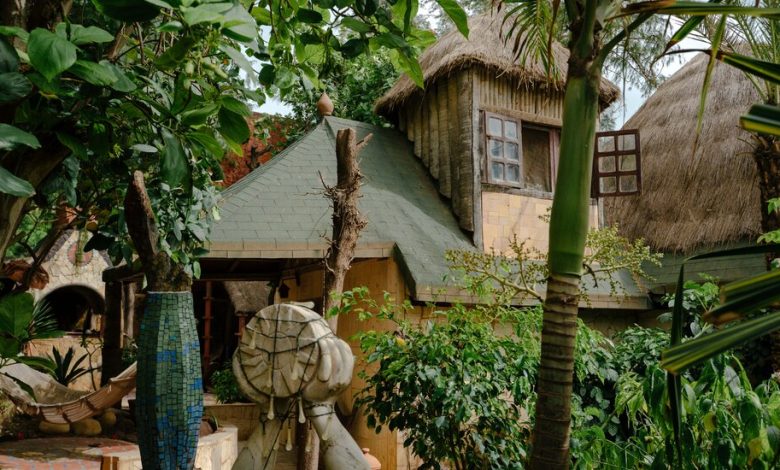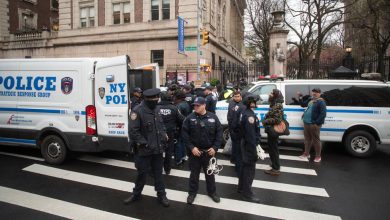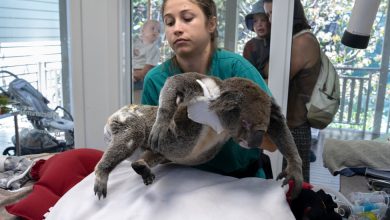Baaba Maal’s Dakar

Had everything gone to plan, the singer-songwriter Baaba Maal’s move to Senegal’s capital from the northern hinterlands would have ended up differently — specifically, with a law degree. “When I first came to Dakar, I was supposed to study at the university because that was the wish of my parents,” he said, while a pair of sculptures, as if on cue, eyed him sternly.
I met Mr. Maal — the “voice of Wakanda” to fans who know him from the soundtracks of “Black Panther” and “Black Panther: Wakanda Forever” — at Dakar’s Museum of Black Civilizations. As we roamed the galleries, he explained that he loved this place for its efforts to repatriate plundered African treasures and its power “to make the young ones interested in arts.” Now 70, he recalled being an artsy young one himself. “What was really, deeply strong inside me — which is to be a singer, to be a performer — came out when I got to Dakar,” he said. “If I wanted to be an artist, I said, ‘This is where I’m going to start a career.’”

Baaba Maal, 70, released “Being,” his 14th studio album, this year.Credit…Matthew Donaldson
So there went his parents’ plan, but his own has worked out nicely. This year alone, he released his 14th studio album, “Being,” to critical acclaim, became a goodwill ambassador for the United Nations Convention to Combat Desertification — a continuation of the work of his nonprofit Nann-K — and began preparations for his arts and culture Blues du Fleuve festival in early December. While he still travels often, he said, “I’ve always wanted Dakar to be where I start my work, get ready for my tours — and come back.”
The appeal was clear. Since he’d moved to Dakar, the city had instituted renowned biennales and fashion weeks. And just the small stretch of the thoroughfare where we stood featured not only the museum, but also the Grand Théâtre National and the restored Art Nouveau commuter rail station. “This is a new dynamic,” he said, pointing out a spot where hip-hop artists now draw thousands of young people to open-air performances. Reveling in the energy, he added, “I often pass by here, open the car window, look at the people coming out of the train and say to myself, ‘Yes, this is the kind of Senegal I want to see.’”
Here are five of his favorite places in and around Dakar.
1. Daniel Sorano National Theater
“I love to see tradition alive,” said Mr. Maal of the theater, inaugurated in 1965 by Senegal’s first president, the poet-philosopher Léopold Sédar Senghor. “And the tradition is still there — the national ballet, the lyrical ensemble, a lot of traditional African music.” He also loves the theater’s soul: “You can see the portraits of all the artists who passed away a long time ago, and who represent a lot to Senegalese people.”
2. Amadou Barry Stadium
Sports fan or not, any music lover will enjoy a match at this soccer and wrestling stadium, where singing and drumming accompany the action. Mr. Maal has a particular fondness for wrestling, the national sport. “It’s not just the sport itself; it’s the dramas, the singers, the costumes — all the culture around the wrestling,” he said. Amadou Barry is also a music venue, where Mr. Maal is a beloved veteran performer. To visit this suburban stadium, you may want a guide.
3. Hotel Sobo Bade
“When friends come, it’s their favorite place to stay,” said Mr. Maal of this dreamy hotel — all thatched domes, mosaic archways and bougainvillea blossoms — in the suburb of Toubab Dialaw, about an hour outside Dakar, where the tranquillity-inducing views of the ocean and city lights inspired his iconic song “Dakar Moon.” He also recommends the nearby African dance institute École des Sables, where anyone can attend the performances at the end of each multiweek session.
4. Soumbedioune Fishing Beach and Market
As much as Mr. Maal is an artist, by birthright, he said, “I’m a fisherman.” And his favorite local connection to those roots is Soumbedioune, where the beach and market are “full of life, noise and energy — with all the boats going out early in the morning, the young people pulling them from the ocean and the women waiting to sell the fish in the markets.”
5. Galle Niwa Restaurant
“It’s beautiful, and owned by a friend who loves to feed people,” said Mr. Maal of this restaurant that’s part of a colonial estate turned hotel on Gorée Island, 25 minutes off the coast. His song “Fatmata” is dedicated to the proprietor, whose kitchen’s thieboudienne (fish, herby tomato sauce and rice), kaldou (garlicky fish and rice) and c’est bon (grilled fish and seafood with an oniony sauce) are favorites of his. And UNESCO-listed Gorée Island, ringed in aquamarine waters, is considered a must for any visitor, as is its Maison des Esclaves, a testament to the horrors of slavery. While the island’s beauty and brutality feel decidedly at odds, you can, in Mr. Maal’s view, “go from very hard, very sad experiences to see that after all, there is hope, there is light, and we can build something from that.”
Follow New York Times Travel on Instagram and sign up for our weekly Travel Dispatch newsletter to get expert tips on traveling smarter and inspiration for your next vacation. Dreaming up a future getaway or just armchair traveling? Check out our 52 Places to Go in 2023.




